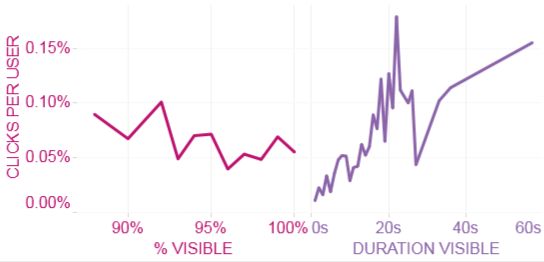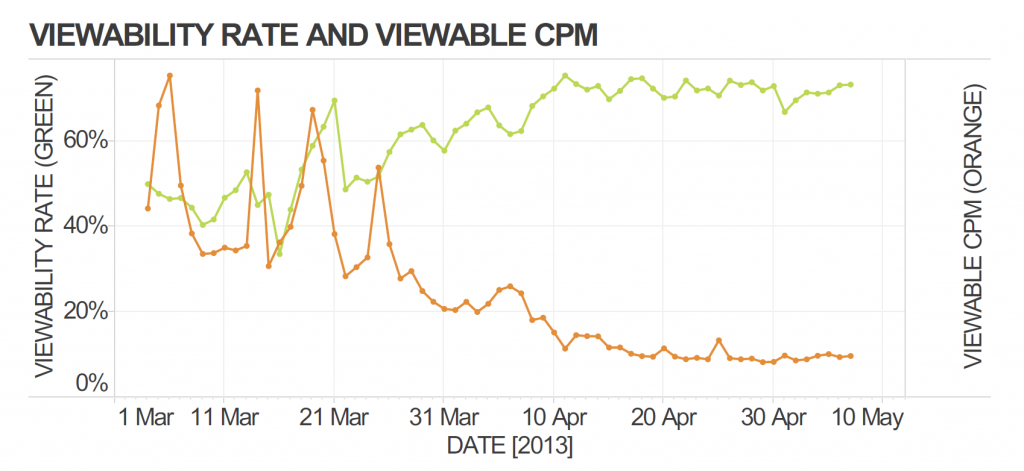‘Advertisers Are Right to Demand Higher Viewability Rates — It’s Up to the Industry to Deliver’, by Sylvain Deffay, Country Manager, France, Infectious Media
by Romany Reagan on 13th Nov 2013 in News

In a recent post in this publication, fundamental questions were raised on the role and prospect for increased ad viewability in our industry. I’d argue that the nature of our medium makes it likely that viewability will become a key benchmark in ad-trading and optimisation. This is something especially relevant in France, where many marketers are still focusing on the last click model.
These views don’t come without experience, we at Infectious Media have already been using an ad viewability measurement to benefit campaigns for over a year, targeting both branding and performance goals.
Branding and engagement
Brand marketers are probably the most naturally attracted to an increase in the viewability of advertising. For brand campaigns to have any effect they not only need to reach the target audience but the ads must be seen.
Working with an FMCG advertiser in France, we were able to customise our viewability measurement to match the client’s objectives. We bought viewable ads to a higher standard than proposed by the IAB (50% of the banner seen, for a least one second), working to a goal of 75% of the banner in view for at least three seconds.
Moving beyond ad-frequency
When we began to optimise this campaign we found that achieving a high duration of viewability was less of a challenge than increasing the percentage of the banner seen. However, interestingly, as seen in the diagram below, the length of exposure to a message was the more fundamental engagement lever. We noticed no increase in clicks-per-users above 88% of banner area seen, but there was a direct correlation between viewable duration and interaction rate.
It is obvious that frequency is meaningless if banners are not first seen. It makes sense to ensure budgets are optimised towards publishers who provide longer banner viewability, brand campaigns need to be monitored not only on an impression and CPM basis, but also on cost-per-exposure-time.
Why viewability is needed in performance marketing
Ad viewability does not intuitively lend itself to direct response marketing, but we found that viewability measurement is also key to improve performance, whilst inspiring new confidence in the post-impression conversion (something still not widely accepted by French marketers).
To gauge the effect of ad views for a travel client we employed a “post viewable-impression conversion” KPI to track users who saw the advert, didn’t click, but went on to convert. Only impressions that were viewable were accredited for the sale, and optimising to this metric significantly reduced wastage as the campaign became more viewable overall.
The graph above displays the rate of viewability of the client’s advertising (green) and the CPM of the banners which were viewed (orange) over a three-month period. It demonstrates how through testing and optimisation, both algorithmic and human, it is possible to improve the overall viewability of a campaign bought through ad exchanges.
When the campaign began 43% of the client’s ads were viewable, a comparable rate to the industry average (comScore June 2013), three weeks of optimisation raised this to 70% and we ultimately achieved an ad-viewability of 75%. This optimisation produced the corresponding fall in CPM for viewable impressions, leading to a reduction in the viewable CPA, and ultimately beating the client’s viewable CPA target by 43%.
A new dawn for display?
For us, these campaigns represent a first step towards an entirely new approach to buying and optimising display advertising. An approach we hope will sound the death knell for some of the cookie-dropping tactics that have driven many performance marketers to solely click-based metrics. Surely this is an opportunity for the display industry to start to catch up with search marketing, still over twice the size of display in France.
Where are the publishers in all of this? If ad viewability is widely adopted, the bulk of budgets will be redistributed to the publishers that are better able to optimise page layouts towards more viewable advertising. The auction will drive increased CPMs for this same inventory, with a new CPvM (cost-per-visible-mille) metric likely to be adopted. This shift should finally confirm there is a finite amount of time being spent online, and therefore a finite amount of valuable inventory.
AdvertiserBrandingDisplayViewability










Follow ExchangeWire